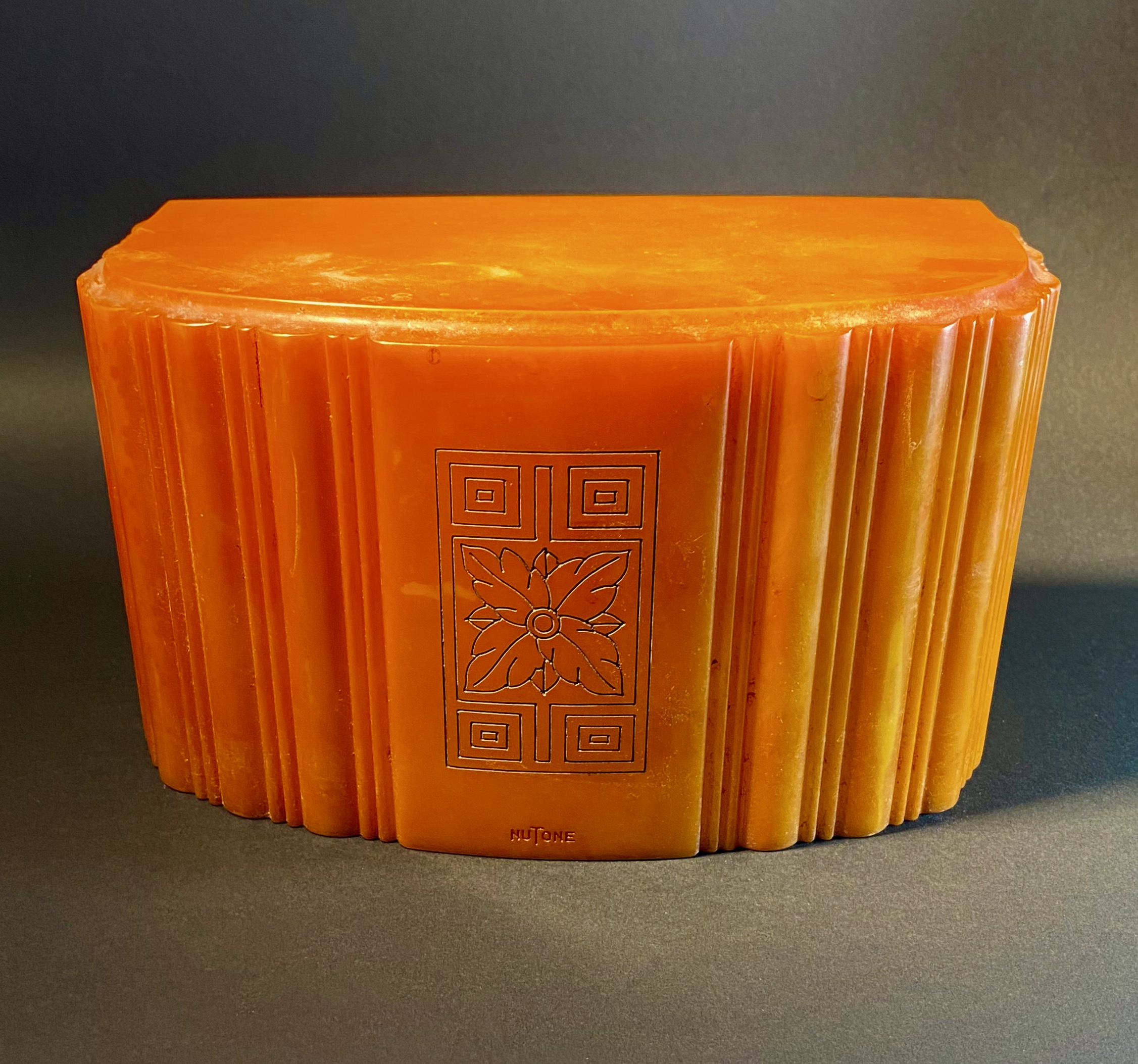

Title: Rare Art Deco Antique Wall Sconce Amber Bakelite Light Cover
Shipping: $29.00
Artist: N/A
Period: 20th Century
History: Art
Origin: North America > United States
Condition: N/A
Item Date: N/A
Item ID: 544
A marvelous historical piece of home decor, this large and rare Art Deco antique wall sconce features an amber bakelite cover. The wall lighting adds a touch of vintage charm to any space. Bakelite, the first plastic, was widely used throughout the 1920s and 30s as a new wonder material. Art Deco Antique Wall Sconces with Amber Bakelite Lighting Covers have a rich history that dates back to the early to mid-20th century. During the Art Deco movement, which reached its peak in the 1920s and 1930s, there was a significant emphasis on modernity, luxury, and bold design. Art Deco Antique Wall Sconces are characterized by their geometric shapes, sleek lines, and use of luxurious materials. The incorporation of amber bakelite in the lighting covers was a notable feature. Bakelite, the first synthetic plastic, was invented by Leo Baekeland in 1907. It quickly gained popularity for its versatility, durability, and the ability to take on various forms. In the context of wall sconces, amber bakelite lighting covers added warmth and elegance to the overall design. The translucent quality of amber bakelite allowed the light to create a soft, inviting glow, contributing to the ambiance of the space. These sconces were not only functional but also served as decorative art pieces, reflecting the glamour and sophistication of the Art Deco era. The popularity of Art Deco Antique Wall Sconces with Amber Bakelite Lighting Covers persisted through the decades, and today, they are highly sought after as collector's items and cherished elements of interior decor that capture the essence of a bygone era.
Bakelite, often regarded as the pioneer of modern plastics, has a fascinating history that intersects with both industrial innovation and artistic expression. Developed by Belgian chemist Leo Baekeland in 1907, Bakelite is a synthetic thermosetting polymer, meaning it hardens irreversibly when molded and heated. This marked a significant departure from earlier materials and gave rise to a new era in material science and design. History of Bakelite: Invention and Early Uses: Leo Baekeland invented Bakelite while searching for a synthetic insulator for electrical equipment. Its heat-resistant and non-conductive properties made it ideal for electrical insulators, and it quickly found applications in various industries. Mass Production and World War I: Bakelite's mass production began in the 1910s, and it became widely used in the automotive and telecommunication industries. During World War I, Bakelite saw increased use in military applications, further establishing its versatility. Artistic Usage in the Art Deco Era: The 1920s and 1930s, known as the Art Deco era, witnessed Bakelite's integration into art and design. Designers and artists embraced its moldability, creating jewelry, household items, and, as you mentioned, lighting covers for wall sconces. Bakelite's ability to mimic the appearance of wood, ivory, and other materials contributed to its popularity in artistic circles. Difference Between Plastic and Bakelite: While Bakelite is a type of plastic, it differs significantly from modern plastics. Here are some distinctions: Composition: Bakelite is a phenolic resin, formed through the reaction between phenol and formaldehyde. Modern plastics, on the other hand, encompass a wide range of polymers with diverse chemical compositions. Production Process: Bakelite is a thermosetting plastic, meaning it undergoes irreversible chemical changes during the molding process, becoming hard and rigid. Most modern plastics are thermoplastics, which can be melted and reshaped multiple times. Properties: Bakelite is known for its durability, heat resistance, and electrical insulating properties. Modern plastics may have different properties depending on their composition, with variations in strength, flexibility, and heat resistance. Aesthetic Considerations: Bakelite's unique appearance, including its ability to imitate other materials, has contributed to its distinctive aesthetic. Modern plastics often aim for transparency or specific coloration rather than mimicking natural materials. In essence, Bakelite holds a special place in the history of plastics, both for its groundbreaking material properties and its impact on artistic and industrial design during a transformative period in the early 20th century.